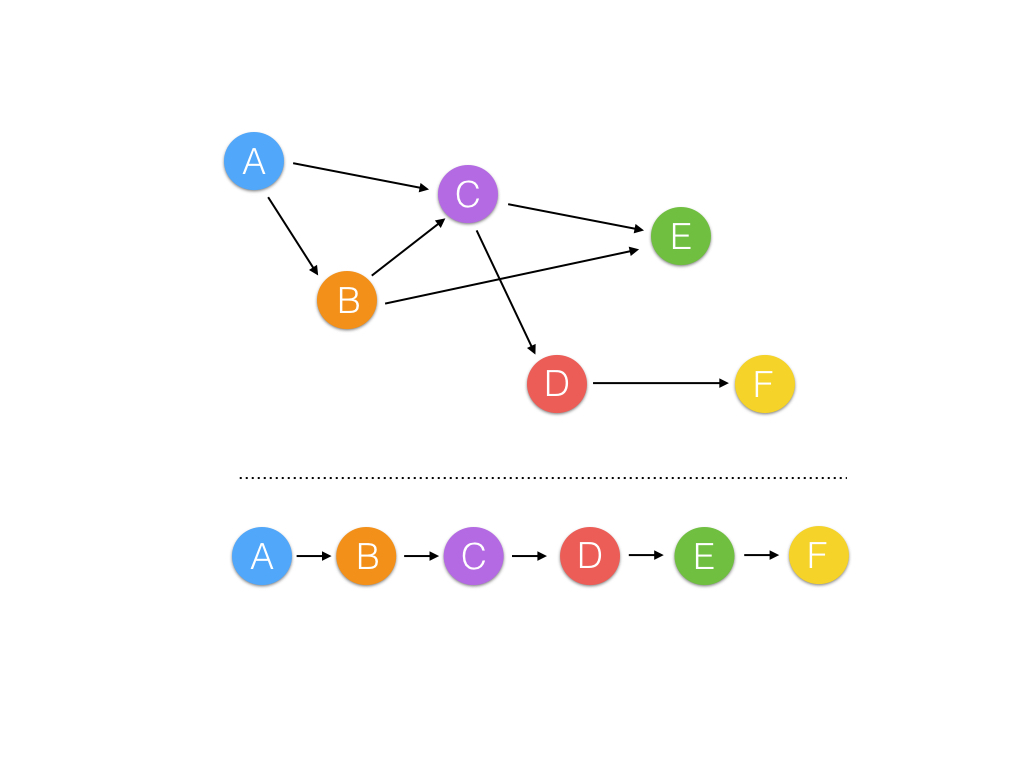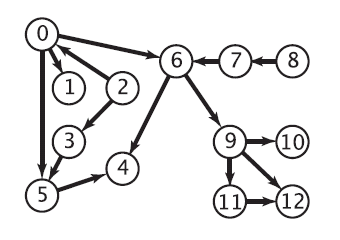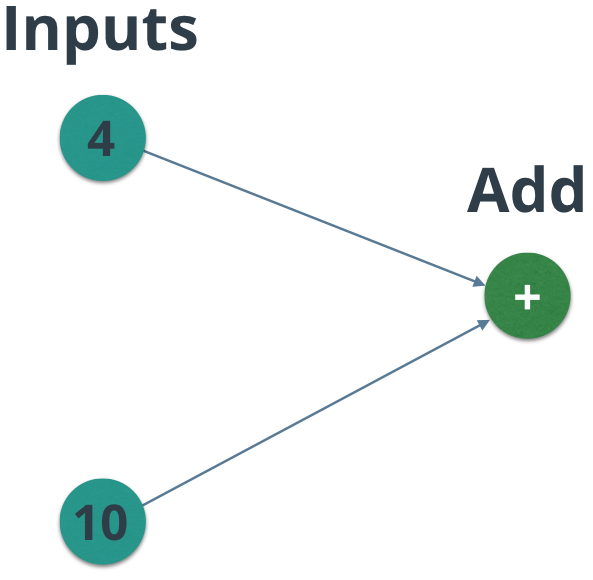23_动手实现TensorFlow–前向传播与拓扑排序
在MiniFlow中我们设置了两种方法使数据在整个图中传递:topological_sort()和forward_pass()。topological_sort()是对图中的节点计算顺序进行排序,返回一个按照要求排序的序列。forward_pass()按照topological_sort()的顺序进行计算。
拓扑排序topological_sort()
为了定义一个网络,我们必须对节点计算顺序进行排序。鉴于某个节点的输入取决于其他节点的输出,我们需要以这样的方式展平图形,在尝试运行某个节点的计算之前解析每个节点的所有输入依赖性。这是一种称为=拓扑排序==的技术。

MiniFlow中的拓扑排序算法是Kahn算法。
Kahn算法
以下是Kahn算法的伪代码
L ← Empty list that will contain the sorted elements
S ← Set of all nodes with no incoming edge
while S is non-empty do
remove a node n from S
add n to tail of L
for each node m with an edge e from n to m do
remove edge e from the graph
if m has no other incoming edges then
insert m into S
if graph has edges then
return error (graph has at least one cycle)
else
return L (a topologically sorted order)
不难看出该算法的实现十分直观,关键在于需要维护一个入度为0的顶点的集合:
每次从该集合中取出(没有特殊的取出规则,随机取出也行,使用队列/栈也行,下同)一个顶点,将该顶点放入保存结果的List中。
紧接着循环遍历由该顶点引出的所有边,从图中移除这条边,同时获取该边的另外一个顶点,如果该顶点的入度在减去本条边之后为0,那么也将这个顶点放到入度为0的集合中。然后继续从集合中取出一个顶点…………
当集合为空之后,检查图中是否还存在任何边,如果存在的话,说明图中至少存在一条环路。不存在的话则返回结果List,此List中的顺序就是对图进行拓扑排序的结果。
感兴趣的伙伴们可以参考博客拓扑排序的两种实现:Kahn算法和dfs算法

对上图进行拓扑排序的结果:
2->8->0->3->7->1->5->6->9->4->11->10->12
前向传播forward_pass()
这是实际运行整个网络的函数,最终输出结果。这个函数需要根据topological_sort()函数输出的已排序的节点序列计算每个节点。
def forward_pass(output_node, sorted_nodes):
"""
Performs a forward pass through a list of sorted nodes.
Arguments:
`output_node`: The output node of the graph (no outgoing edges).
`sorted_nodes`: a topologically sorted list of nodes.
Returns the output node's value
"""
for n in sorted_nodes:
n.forward()
return output_node.value
实际运行
miniflow.py文件可参考github链接代码链接
nn.py创建一个有两个输入节点,一个add节点的网络并运行。网络结构如图:

from miniflow import *
x, y = Input(), Input()
# f = Add(Add(Add(x, y),y),x)
f=Add(x,y)
feed_dict = {x: 10, y: 5}
sorted_nodes = topological_sort(feed_dict)
# print(len(sorted_nodes))
output = forward_pass(f, sorted_nodes)
# NOTE: because topological_sort set the values for the `Input` nodes we could also access
# the value for x with x.value (same goes for y).
# print("(({} + {}) + {}) + {} = {} (according to miniflow)".format(feed_dict[x], feed_dict[y],feed_dict[y], feed_dict[x], output))
print("{} + {} = {} (according to miniflow)".format(feed_dict[x], feed_dict[y], output))
实际运行结果:
10 + 5 = 15 (according to miniflow)
小伙伴们可以把注释掉的两行代码取消注释,同时注释掉他们相同功能的代码,看看会发生什么。
# f = Add(Add(Add(x, y),y),x)
# print("(({} + {}) + {}) + {} = {} (according to miniflow)".format(feed_dict[x], feed_dict[y],feed_dict[y], feed_dict[x], output))
这里实际上会创建一个三个add节点加两个输入节点的图,具体过程请小伙伴们根据代码推断。

发表评论
Want to join the discussion?Feel free to contribute!